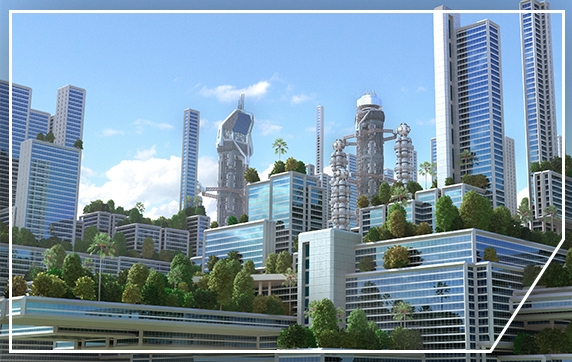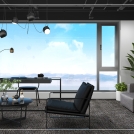In today's rapidly evolving world, the realms of design, sustainability, and technology are converging like never before. This convergence presents both challenges and opportunities, shaping the way we live, work, and build our cities. In this blog, we will delve deep into this intersection, exploring how innovative solutions are emerging to address pressing environmental concerns while pushing the boundaries of architectural design. We'll examine the role of AluK, a leader in aluminium building systems, in navigating this landscape, showcasing how their products embody the principles of design, sustainability, and technology to create better, smarter spaces for the future.
Exploring the Intersection:
At the heart of the intersection of design, sustainability, and technology lies the quest for solutions that not only meet the needs of the present but also safeguard the well-being of future generations. Design, with its focus on form and function, plays a crucial role in shaping the built environment, influencing everything from urban landscapes to interior spaces. Meanwhile, sustainability has emerged as a paramount concern, driven by the urgent need to mitigate climate change and minimize environmental impact. Technology, with its rapid advancements, offers tools and innovations that have the potential to revolutionize how we approach design and sustainability challenges.
Design in the Digital Age:
In the digital age, design is no longer confined to the drawing board; it extends into the realm of virtual reality, parametric modelling, and computational design. Architects and designers are harnessing the power of technology to create more efficient, sustainable, and visually striking buildings. From generative algorithms that optimize building forms for energy performance to virtual reality simulations that allow stakeholders to experience spaces before they are built, technology is reshaping the design process, enabling greater creativity and efficiency.
Sustainability as a Guiding Principle:
As awareness of environmental issues grows, sustainability has become a guiding principle in architectural design. Buildings account for a significant portion of global energy consumption and greenhouse gas emissions, making them a key target for sustainable interventions. Sustainable design strategies such as passive solar design, natural ventilation, and green roofs are increasingly being integrated into building projects to reduce energy usage and minimize environmental impact. Additionally, the use of sustainable materials, such as recycled and low-impact materials, is becoming more prevalent in construction practices.
AluK: Pioneering Sustainable Solutions:
In this landscape of design and sustainability, AluK stands out as a pioneer, leading the way with its innovative aluminium building systems. AluK's products embody the principles of sustainability, offering high-performance solutions that minimize energy consumption, maximize natural light, and enhance indoor environmental quality. From energy-efficient windows and doors to advanced curtain wall systems, AluK's aluminium building systems are designed to meet the highest standards of sustainability while providing unparalleled aesthetic appeal and functionality.
One of the key advantages of aluminium building systems is its inherent sustainability. Aluminium is a highly recyclable material, with the potential to be recycled indefinitely without losing its properties. This makes it an ideal choice for sustainable building projects, as it helps reduce the demand for virgin materials and minimizes waste. AluK's commitment to sustainability extends beyond the materials themselves to the entire lifecycle of their products, from manufacturing to installation and beyond.
Moreover, AluK's embrace of technology further enhances the sustainability of its products. Advanced manufacturing techniques, such as precision engineering and computer-controlled machining, ensure that AluK's aluminium building systems are produced with minimal waste and maximum efficiency. Digital tools and simulations allow AluK to optimize the performance of their products, ensuring that they meet the highest standards of energy efficiency and environmental sustainability.
AluK's aluminium building systems also exemplify the intersection of design and technology. With their sleek profiles, customizable finishes, and innovative features, AluK's products push the boundaries of architectural design, enabling architects and designers to create spaces that are both visually stunning and environmentally responsible. From iconic skyscrapers to sustainable residential developments, AluK's aluminium building systems are helping shape the built environment of the future.
In conclusion, the intersection of design, sustainability, and technology holds immense potential for creating a built environment that is both beautiful and sustainable. AluK, with its innovative aluminium building systems, is at the forefront of this intersection, leading the way with sustainable solutions that embody the principles of design excellence and technological innovation. By embracing the principles of sustainability and harnessing the power of technology, AluK is helping to create better smarter spaces for generations to come.



